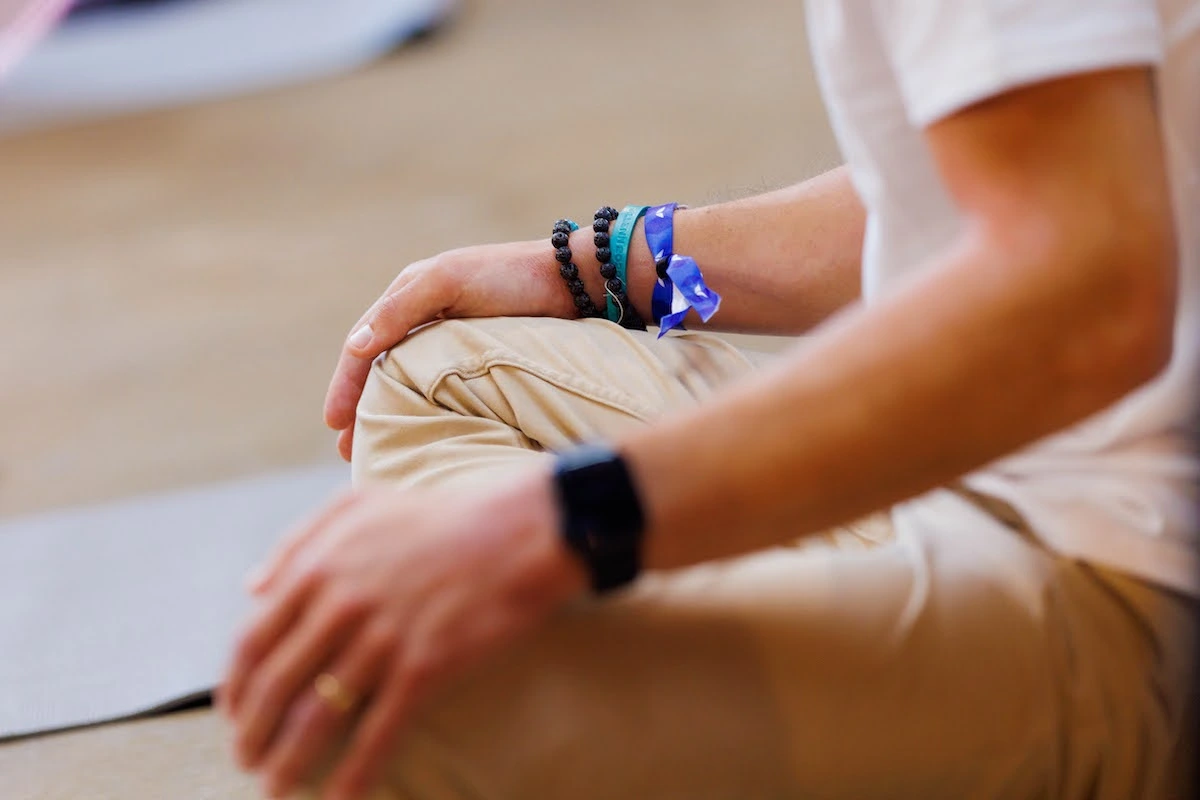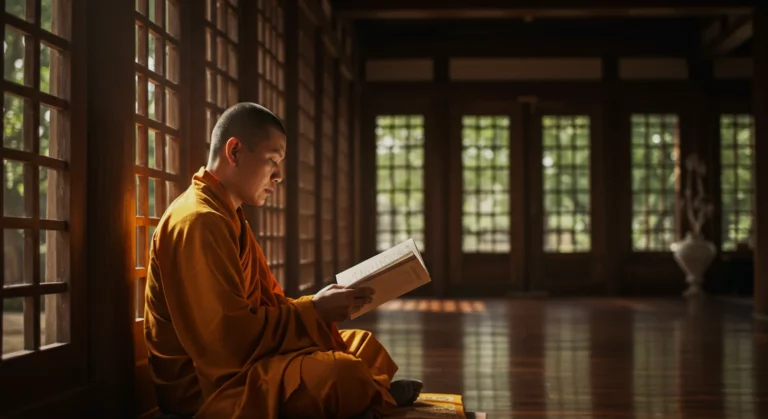Are you feeling overwhelmed and stressed on a daily basis? Do you want to improve your mental and emotional well-being but can’t find the right solution?
Mindfulness meditation might be the answer you’re looking for.
By combining mindfulness with meditation, you can unlock a powerful tool for personal growth and positive change. This ancient meditation technique is proven to help reduce stress, alleviate anxiety and depression, and promote overall contentment with life.
And the best part? It’s simple and flexible enough to fit into even the busiest of schedules.
By practicing it regularly, you can learn to be present in the moment and cultivate a deeper sense of inner peace and happiness—all from within.
What is mindfulness meditation?
At its core, mindfulness meditation involves intentionally observing your thoughts, emotions, and sensations in the present moment without judgment or distraction. The ultimate goal is to bring this heightened awareness into your daily life.
According to Emily Fletcher, the founder of Ziva Meditation and trainer of Mindvalley’s The M Word Quest, the purpose of this practice isn’t to get good at meditating but to get good at life. And doing it on a daily basis can help cultivate a sense of inner peace and happiness that can positively impact all aspects of your life.
So what exactly is the difference between mindfulness and meditation? Here’s a closer look:
- Mindfulness: Ringing your awareness into the present moment.
- Meditation: An umbrella term for practices that allow you to access altered states of consciousness.
While mindfulness can be a part of meditation, not all forms of meditation are mindfulness-based.
That’s why, according to Emily, meditation alone isn’t enough. If you want to manage stress in the moment, increase your focus, improve your overall well-being, and even spice up your sexual life, mindfulness is key.
The origin & meaning of mindfulness meditation
This spiritual practice has been around for thousands of years. Though its exact origin is unknown, instructions for it have been found in the ancient texts of nearly every major religion, including Hinduism and Buddhism, as well as Judaism and Christianity.
Buddhism has played a significant role in helping us understand the origins of mindfulness meditation. As part of the belief system, it’s important to cultivate a non-judgmental awareness of yourself, your feelings, your mind, and your surroundings. This distance and observation can be trained through a series of mindfulness meditations.
For many religions, it was used as a way to step back from the world and connect with your spiritual self, as well as to realize and understand the connection between “self” and “other.”
Today, the meaning of it has shifted away from its religious connotations. Instead, it has been adopted by psychologists, healthcare professionals, life coaches, and mentors as an effective way to deal with the stresses and illnesses of the modern world.
The benefits of mindfulness meditation
Mindfulness meditation has numerous spiritual, emotional, and physical benefits. This meta-analytic review has concluded that mindfulness-based therapy can alleviate anxiety and depression, as well as prevent or cure illnesses linked to long-term stress.
Here are a few ways that this practice can improve your health, according to science:
- Help you lose weight,
- Prevent illness,
- Keep you healthy after cancer,
- Improve heart health, and
- Help with insomnia.
In short, mindfulness meditation can help you become a calmer, healthier, and happier person.
How to do mindfulness meditation
Before you start practicing, it’s crucial to understand that the goal of meditation of any kind isn’t to get rid of your thoughts.
As Emily explains in her Mindvalley Quest, your thoughts aren’t your enemies. Rather, they allow you to become aware of them and return to your meditation technique.
Here are the basic steps to doing mindfulness meditation for beginners:
- Find a quiet place to sit comfortably.
- Set a timer for the desired length of your meditation session.
- Close your eyes.
- Take a few deep breaths, releasing any tension in your body as you exhale.
- Breathe naturally, focusing your attention on your breathing.
- When your mind wanders, simply notice the thought and gently bring your focus back to your breath.
- When the timer goes off, slowly open your eyes.
- Take a moment to notice how you feel before getting up and continuing with your day.
Emily recommends starting with just a few minutes of meditation each day and gradually working up to longer sessions.

12 tips to get started with mindfulness meditation today
The following tips can help you get started with mindfulness meditation and maintain a regular practice:
1. Do it today
It’s one thing to read about meditation; it’s another to actually meditate. And it starts with your commitment to practice mindfulness meditation.
2. Set aside time
If you think you don’t have spare time, consider the spaces in between your daily tasks where you typically browse the internet, scroll through social media, or watch TV. You’ll find at least 10 minutes to devote to mindfulness.
3. Find a quiet, solitary environment
A noise-free space is extremely conducive to mindfulness, especially for beginners. So finding a solitary room dedicated to your meditation practice is crucial.
Eventually, your mind will instantly get into the right state as soon as you find yourself in that special place.
4. Set a timer
Setting a timer will help you stay focused on the process and prevent you from wondering how long you’ve been meditating. Start short and increase your meditation time gradually.
5. Get comfortable
Unlike traditional meditation, mindfulness meditation doesn’t require physical discomfort. So get as comfortable as possible, and if you start feeling discomfort, change your position.
Falling asleep? It’s not a problem.
According to Emily, you’re giving your body rest that’s five times deeper than sleep. “As long as you aren’t falling off your chair, you’re doing good enough,” she adds.
6. Find your breath
Before starting your meditation, close your eyes and notice your breath. Tuning into your natural breathing signals your brain that you’re getting calm, relaxed, and focused.
Don’t force your breath. Experience its natural movement.
7. Observe without judgment
Getting distracted, anxious, and utterly bored is part of the process. Observing your states like clouds passing in the sky will eventually train your brain to detach and observe them instead of judging and reacting.
When an emotion or thought comes up, acknowledge what you are thinking or feeling and gently return to your breath.
8. Allow yourself to fail
Gelong Thubten, a professional meditation teacher and the trainer of Mindvalley’s Becoming More Loving Quest, explains that when you meditate and your mind wanders, self-judgment happens. He says, “Within seconds, our plan to meditate fails, and your mind goes all over the place.”
This is why meditation becomes a very harsh and stressful experience for so many people. But it’s only because of the attitude. Instead, you can allow yourself to fail, seeing failure as a human condition.
So when your mind gets distracted, see it as a chance to grow stronger and master your mind.
9. Return to your breath
When your mind starts to wander, return to the rhythm of your breath. When you do so, you’re mastering your mind.
This is how you learn to let go of stress and negativity in your daily life and return to peace of mind.
10. Practice every day
Remember that you’re practicing meditation to get better at life, so consistency is key. By practicing mindfulness meditation every day, you’re building one of the most rewarding habits in your life, which will give you long-lasting benefits across the board.
11. Start and/or end your day with mindfulness
Starting your day off with a morning mindfulness meditation is a good way to get it off on the right foot. It will prime your brain for the day ahead.
And when you do it before going to bed, it will help your brain detach from all daily activities and unwind naturally.
12. Take your meditation into the day
The ultimate goal of your meditation practice is to make mindfulness your default state. By practicing tiny, microscopic moments of awareness throughout the day in any situation, you’re rewiring your system.
Here are some ways you can incorporate it into your day:
- While standing in line, instead of checking your phone, bring your awareness to your feet and feel the ground.
- While working in the office or from home, feel the chair 10-20 times a day for a few moments each time.
- Brush your teeth or wash your hands mindfully.
The more you practice it, the more natural it becomes.
4 incredible guided mindfulness meditation YouTube videos (free)
If you’re at the beginning of your mindfulness practice, you may greatly benefit from guided meditations. They provide structure and guidance and help you stay focused on the process.
Try these four meditations:
1. Meditation to ease anxiety and boost immunity
2. Meditation for anxiety, depression, and stress relief
3. Meditation for overthinking
4. 6 Phase Meditation with binaural beats
You can combine them with self-practice. Eventually, you will be able to create your own meditation that fits your unique needs and preferences.
Triple your well-being with Mindvalley
Believe it or not, there is another M-word that can take your well-being to the next level, and that’s “manifestation.” Emily defines it as “consciously creating a life you love” because it entails taking the time to define what you want and placing this order with the Universe.
And this is what The M Word Quest with Emily Fletcher can help you with. In 32 days, you will not only incorporate mindfulness meditation into your daily routine but also uplevel all areas of your life. And the best part is that you can sample classes from this quest by unlocking your free access.
As Emily says, “Our happiness exists in one place, and that is inside of you; and it exists in one time, and that is right now.”
Welcome in.








